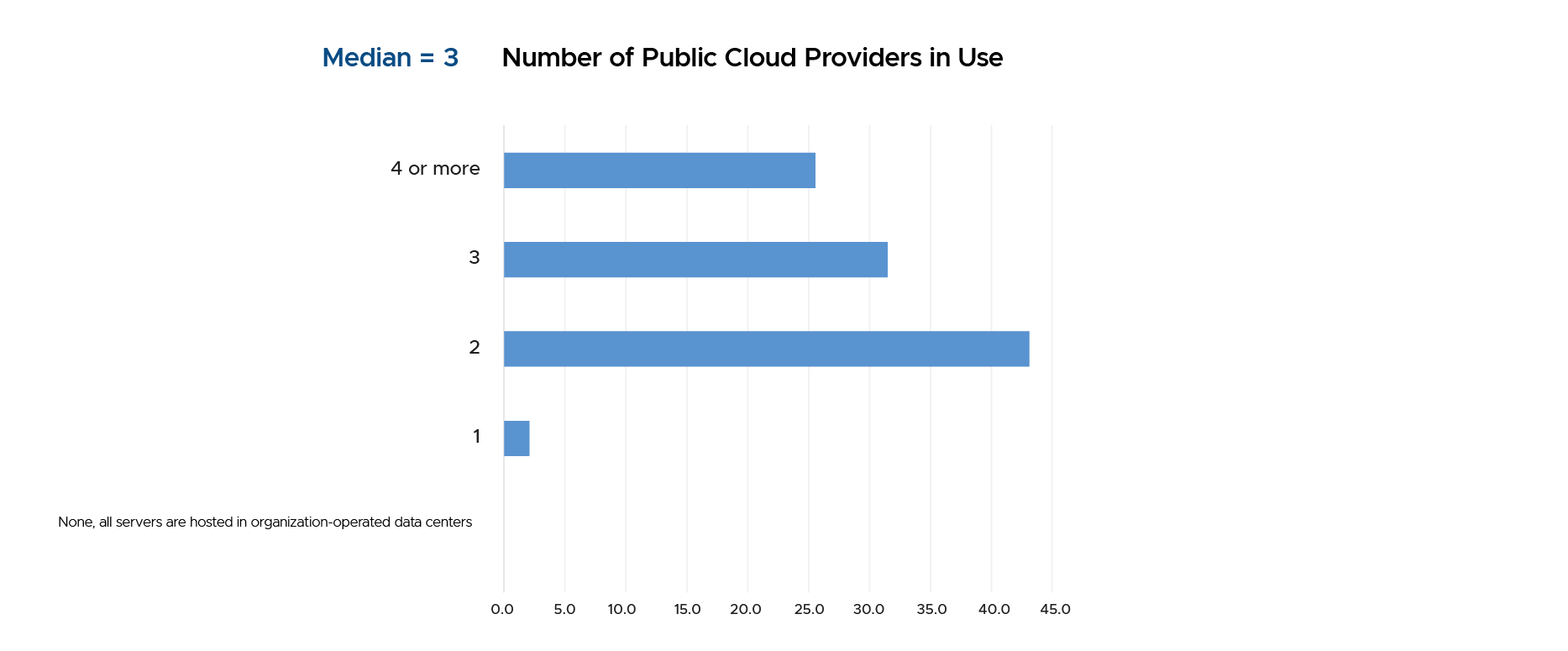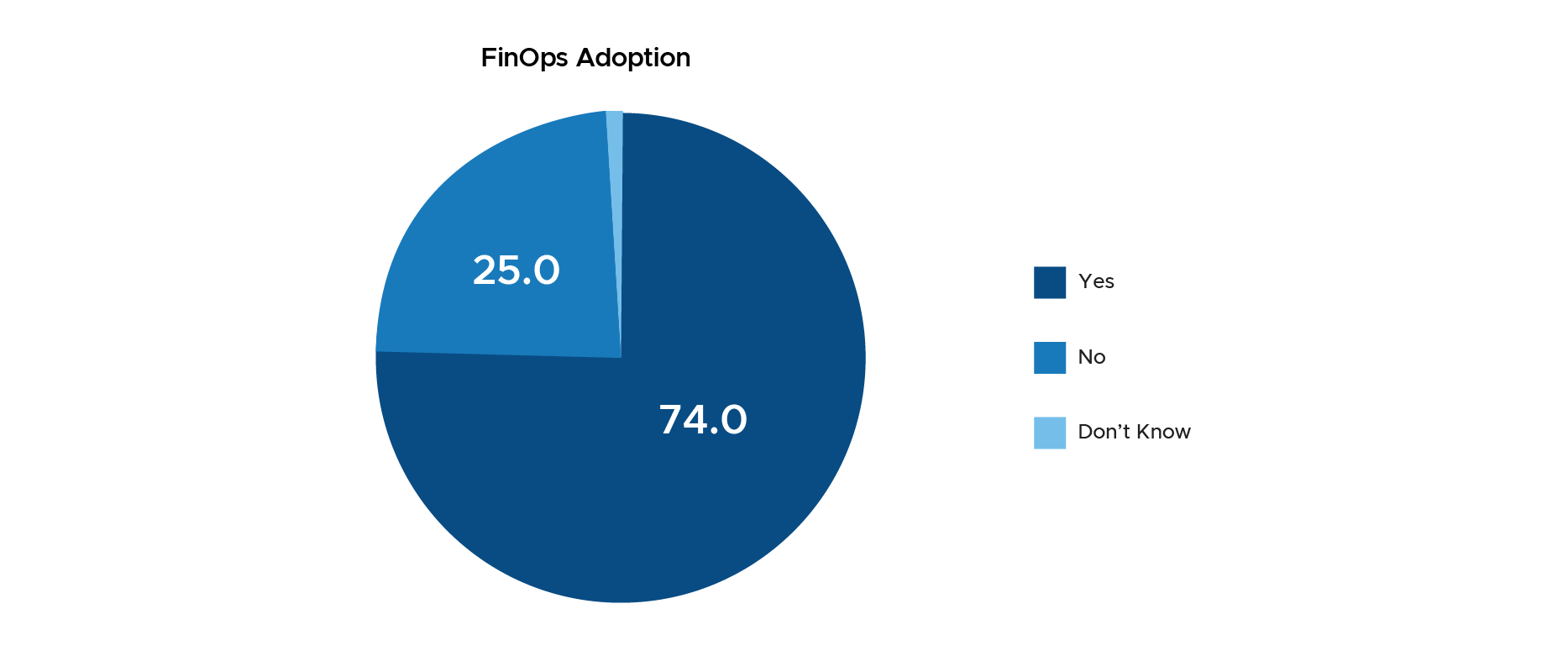Today, businesses increasingly rely on multi-cloud environments, focusing on digital business and the new processes required of enterprise IT to improve flexibility and scalability. This new agility adds complexity and makes it more difficult to control high cloud costs. This blog examines the growing importance of FinOps practices and cloud cost solutions in a multi-cloud context. FinOps maturity is key to helping organizations optimize their cloud expenses. Enterprises can manage their cloud investments more effectively by improving cost transparency, visibility, and accountability between teams. The blog also explores essential practices enabling businesses to achieve significant savings on their cloud bills. As FinOps adoption grows to meet the increasing demand for effective cloud cost management, multi-cloud solutions are essential to maximizing a company's cloud investment in a complex landscape.
According to IDC’s Intelligent CloudOps Survey (October 2023), over 98% of large enterprises have two or more public cloud providers, while the median across surveyed companies is three different hyperscalers. Figure 1 shows the breakdown of the number of active public cloud vendors used by large enterprises in Q4 2023, with all companies using at least one public cloud company. The digital transformation many enterprises have undertaken in the last few years has pushed them to select cloud providers that were the quickest at addressing the specific project. Over time, this meant using best-of-breed cloud providers based on unique applications or business requirements instead of standardization. This new data implies that today's digital enterprises are using most or all of the Big Three cloud providers and juggling complex pricing and capabilities across them.
Q. How many public cloud providers or hyperscalers is your organization currently utilizing for IT Infrastructure as a Service or Platform as a Service or other external server hosting?

n = 104 (Source: IDC’s Intelligent CloudOps Survey, October 2023)
FinOps can address the increasing costs of multi-cloud complexity. Since 2019, companies have been embracing the growing practice of FinOps, and IDC found that 74% of enterprises have begun their FinOps journey. It is not too late for companies that haven’t yet started. They can begin their journey today with the FinOps best practices discussed here that can help them.
Figure 2 demonstrates the incredible growth of enterprise FinOps adoption in just a few years. What is FinOps? In an updated post in December 2023, the nonprofit FinOps Foundation defined it as "an operational framework and cultural practice which maximizes the business value of the cloud, enables timely, data-driven decision-making, and creates financial accountability through collaboration between engineering, finance, and business teams."
FinOps involves disparate teams collaborating to create a culture of accountability to find cloud savings and improve return on investment in a multi-cloud environment. The FinOps team is typically led by a full-time FinOps practitioner, who regularly brings together the other (part-time) team members to review current cloud spending and future cloud investments. Maturity levels vary greatly between companies, with many taking a pre-crawl (planning), crawl, walk, and run approach to FinOps. This continual improvement approach allows celebrating easy wins such as cost savings with leadership as more advanced capabilities, including full charge-back and unit economics, are added as the team matures.
Q. Does your organization have a FinOps team and processes in place today?

n = 104 (Source: IDC’s Intelligent CloudOps Survey, October 2023)
A FinOps team can't mature or deliver quick wins without a capable cloud cost tool that supports multiple clouds. A single source of truth is essential for the FinOps team to combine all cloud spending. With thousands of possible pricing combinations per hyperscaler, selecting a tool to make actionable recommendations across all the company's cloud providers is crucial. Managing complex costs across multiple clouds can be challenging, but companies can deploy several strategies to control expenses. By following these strategies, they can help their FinOps team mature and maximize their cloud investment.
1. Select appropriate cloud cost management tools: Selecting a tool that supports all of a company’s current and planned public cloud providers is an obvious goal. Teams risk blind spots if their tool doesn't support all cloud providers that the enterprise uses. Enterprises should select a tool or platform specifically designed for multi-cloud cost management, where all the dashboards and pricing recommendations are visible centrally. FinOps teams can then collaborate and hold one another accountable for implementing all agreed recommendations.
2. Automate resource optimization: Some tools support only cost and pricing analysis. Selecting one that can optimize cloud resources across multiple clouds is also important. Many tools will continuously monitor resource utilization and the right size of a company’s cloud infrastructure as needed. FinOps teams should seek continual improvement by reviewing resources and proper configuration. Enterprises can downsize over-provisioned resources or decommission abandoned virtual servers. This approach can save significant costs without impacting the user experience.
3. Automate cost allocation with tagging: FinOps teams must agree on and implement a robust cost allocation strategy with automated tagging to support it. Consistently tagging cloud resources across multiple clouds is essential. This tagging process includes all the relevant metadata (e.g., department, cost center, application, project, environment type) for each cloud resource, allowing companies to accurately track costs and allocate expenses to the respective teams or DevOps projects.
4. Monitor costs and budgeting: Many modern cloud cost tools can set cost alerts and budget thresholds, notifying FinOps teams of new spending or certain exceeded budget limits. This proactive approach to FinOps reduces surprise billings.
5. Use Reserved Instances (RI) and savings plans: FinOps teams should secure long-term savings with cloud providers. Vendor negotiation requires a team approach, and the FinOps team must accurately forecast demand. Once forecasts are created, teams should match this demand with RIs or savings plans to maximize their cloud savings. Proper forecasting and commitment to these arrangements require business owners, procurement, and legal groups to collaborate to lock in substantial cost reductions for predictable workloads.
6. Schedule shutdowns and tuning: Not all workloads are in use 24/7, especially in development and disaster recovery environments. IT operations teams working with FinOps groups can automate the shutting down or scaling of resources during off-peak times. Scheduled shutdowns during non-business hours or reduced resources based on workloads can prevent unnecessary spending on idle resources. However, finding idle resources across multiple clouds is difficult, so an accurate inventory and central dashboard of all resources are essential.
7. Use spot instances available in many public clouds: Using spot instances or preemptible VMs for less critical workloads or applications load-balanced across both spot instances and RIs can save enterprises 70%–80% compared to on-demand pricing. IT automation is essential when using spot instances to maintain resilience and bring the environment back to full capacity if the hyperscaler pulls the spot resources. Many modern applications, such as container-based Kubernetes, can support this architecture.
8. Training and awareness: Educating FinOps teams about the latest best practices, including obtaining FinOps Foundation certification, is important to any cloud cost strategy. Creating a culture of accountability, with a thorough understanding of cost-consciousness across the organization, will maximize cloud investment.
By implementing these strategies, FinOps teams can manage costs across multiple clouds more effectively while maturing and increasing their capabilities. This approach will improve the company’s digital business by optimizing performance and ensuring efficient resource utilization for the best customer experience.
Finding the Right FinOps Partner
The importance of Cloud FinOps in organizations is on the rise. However, with varying FinOps maturity across organizations, it is essential to find the appropriate partner who can help adopt FinOps, optimize cloud costs as well as help you track these metrics. CloudKeeper is a multi-cloud cost optimization and FinOps solution that offers savings, software, and services, all bundled into one solution. As a certified AWS, Microsoft, and Google Cloud Partner, we help 350+ businesses with solutions tailored to specific FinOps needs. Our global clients have successfully saved more than $100 million in cloud costs.
